“The Great Flood”: cities that risk being under water as early as 2030 (19 photos)
Climate change is a reality of our time, and if action is not taken, the consequences for the Earth and its inhabitants, including you and me, can be very serious. 
This is what happens when water rises several meters in Venice
It is difficult to say what exactly is causing global warming on Earth, but many scientists believe that man and his activities played the main role in this. Yes, we are talking about greenhouse gases, because of which we found ourselves in a kind of “planetary greenhouse”.
I cannot help but add that a number of researchers claim that it is impossible to calculate the human “contribution” to the strengthening of the greenhouse effect due to the low concentration of “anthropogenic gases” in the atmosphere. It turns out that the exact answer to this question is: “Who is to blame?” - in general, no.
One way or another, according to scientists, the prospects for 2030 do not look very encouraging, to put it mildly. They believe that if humanity does not take action, the planet as we know it today will soon no longer exist.
To that end, an independent team of scientists from Climate Central has created a map that gives you a first-hand look at which parts of the world are likely to be underwater in the near future due to rising sea levels.
According to these studies, based on the forecasts of climatologists, if the situation with greenhouse gases does not change, then by 2030 a huge amount of ice will melt, the water level on Earth will rise by 1 meter, and at least 9 major cities of the world will be under water.
Amsterdam
We have all heard that most of the Netherlands is quite low relative to sea level. And looking at this map of Amsterdam, where the ground level below 1 meter relative to the water is indicated in red, we can see that in 8 years the Dutch will not have a very happy future. 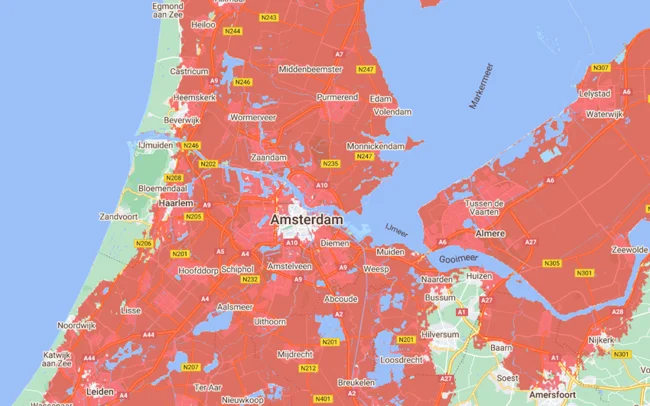
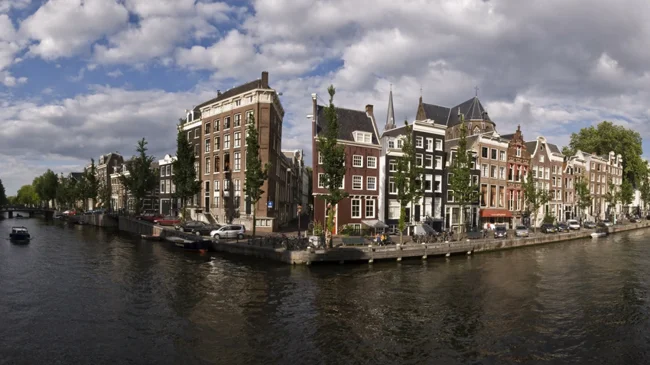
However, the Dutch are famous for their ability to fight floods and have been demonstrating this to the whole world for thousands of years. After all, local residents settled in these places, on artificial hills, back in the 5th century BC, and the Greek geographer Pytheas, who lived 2300 years ago, mentioned the following about the Netherlands:
- More people die in the fight against water than in wars. Twice a day, the ocean tide floods vast areas of land and hides the earth underneath. Nature here belongs not to people, but to the sea.
But looking at all the efforts of the Dutch, their systems of dams, dams and locks, I think that they have every chance to cope with the coming rise in sea levels.
Basra
This main port city of Iraq is located on the wide Shatt al-Arab River, which flows into the Persian Gulf. Due to its complex network of canals and channels, as well as the surrounding marshes, Basra and its surrounding areas are highly vulnerable to rising sea levels. 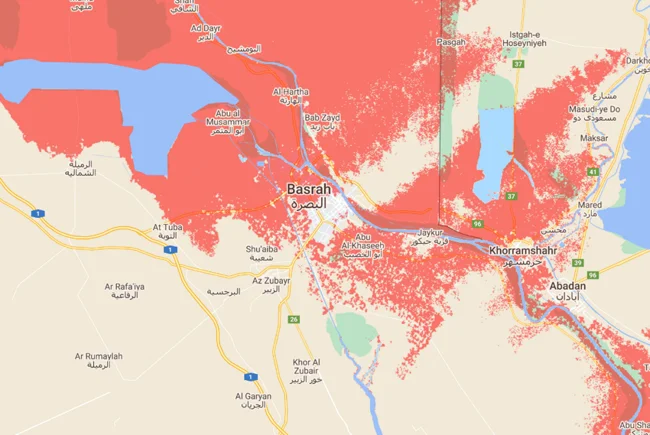
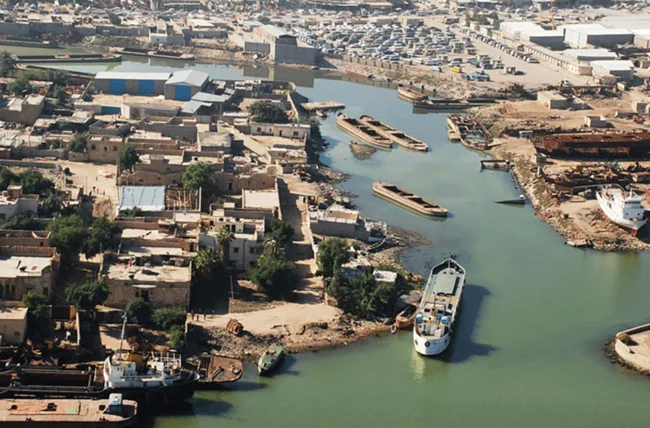
As if this were not enough, Basra has also suffered for many years from a lack of clean water and diseases transmitted through poor-quality drinking water. For example, 40 percent of local residents do not have running water or sewerage in their homes. Therefore, flooding can only worsen existing problems.
- There is water in Basra. It’s not even like that: we are surrounded by water on all sides. But this water cannot be drunk, it is too polluted, said Al Hasan, one of the local residents.
New Orleans
New Orleans is the most populous city in Louisiana and the most popular port on the Gulf Coast. According to some tourists, New Orleans can be called the most “unique and multicultural” city in America. But, due to its proximity to water, it has always been very vulnerable to floods. 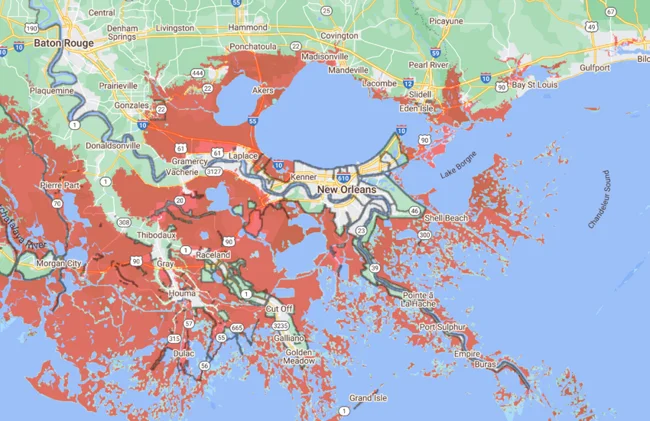
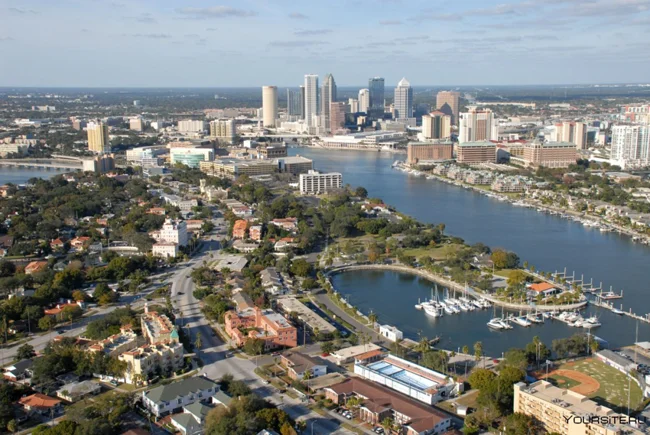
See those dark lines on the map around New Orleans? This is a city levee system that was built to protect the city from the rising water that surrounds it on all sides.
Without these protective structures, the city would have faced even greater damage than what it suffered in 2005 during Hurricane Katrina. But even with these dams, an increase in water levels of 1 meter would result in a real disaster for New Orleans.
Venice
This list, of course, could not be complete without the magnificent city in northeastern Italy, lying on 118 small islands. The fact is that, in the near future, Venice faces a double threat: rising sea levels and the sinking of islands under the weight of buildings into the ground - the city is sinking by 2 millimeters every year. 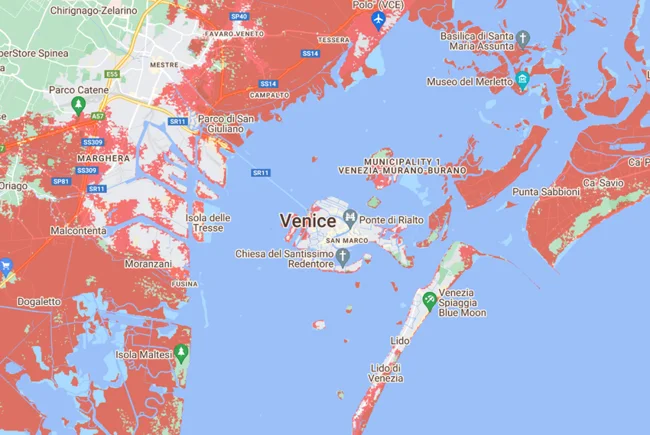

Venice has repeatedly suffered from severe floods. Climate change will only increase the frequency of high tides that flood it. For example, if several decades ago the phenomenon of “high water” in the famous Piazza San Marco (photo from the cover of the article) was observed 9 times a year, today it occurs 90-100 times a year.
Like New Orleans, Venice has a flood protection system in place, but as the “water crisis” worsens, it will become increasingly difficult and, of course, more expensive to contain them.
Ho Chi Minh City
Those who are older remember it as Saigon, under which name it existed until 1976, when it was renamed in honor of the founder of the Workers' Party of Vietnam. In less than 200 years, Ho Chi Minh City has grown from a fishing town into the largest city in Vietnam with a population of more than 9 million inhabitants. 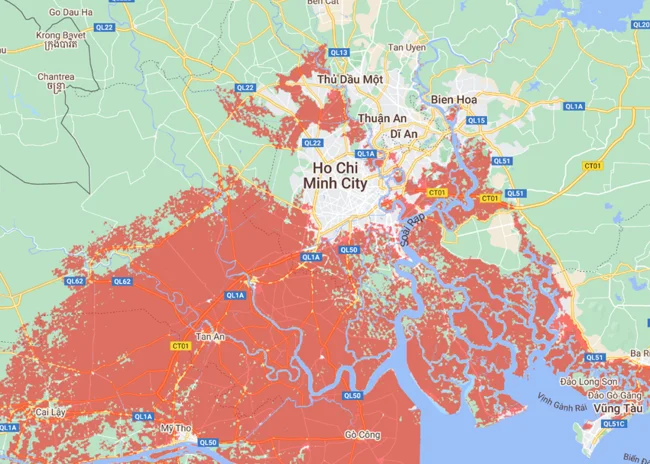
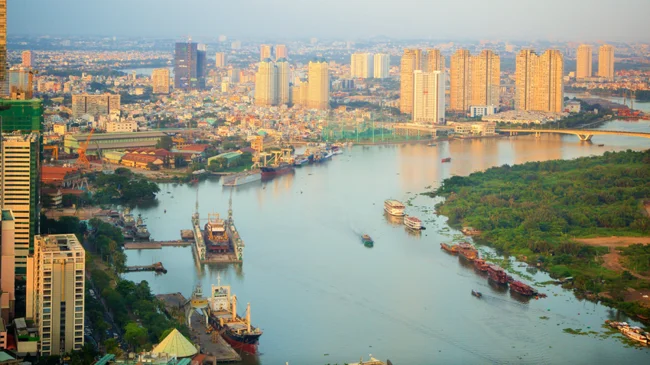
As we can see, Climate Central's map shows that areas of Ho Chi Minh City are at serious risk of being underwater by 2030. This is especially true in the eastern regions, built on swampy areas.
While downtown Ho Chi Minh City itself is unlikely to be underwater in the next decade, it will almost certainly become more vulnerable to flooding and tropical storms. Most of all, in this regard, experts are concerned about the area along the Mekong Delta.
Calcutta
Much of West Bengal has prospered for centuries thanks to its fertile lands, but as the map shows, the water that once gave life could now be causing big problems in the 14 million-strong city of Kolkata and its surrounding areas. 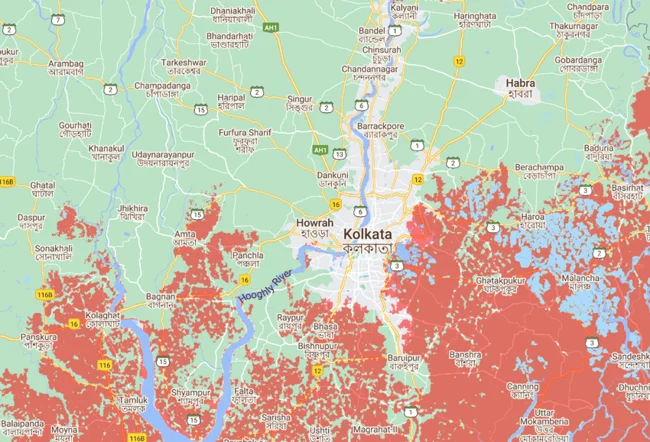
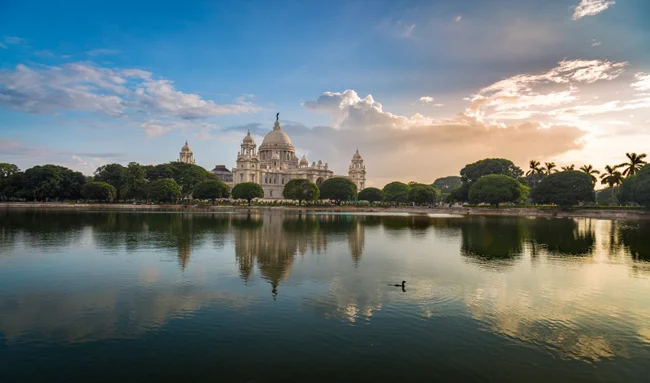
Like Ho Chi Minh City, the city experiences great difficulties during the rainy season, as it is located quite low relative to sea level. Heavy summer monsoons and tropical cyclones add to the city's problems.
Bangkok
Even according to research from 2020, it became known that Bangkok could become one of those cities that will suffer more than others from global warming in the short term. According to researchers, by 2050 it will probably be completely hidden under water. 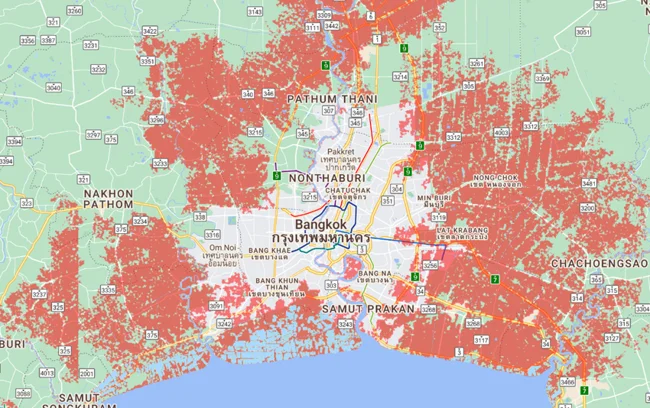
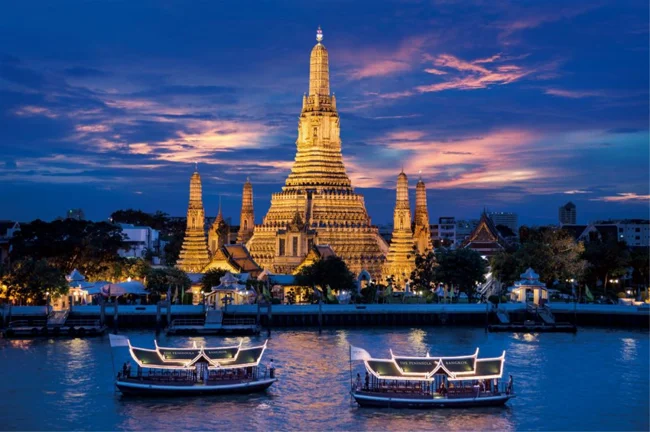
The capital of Thailand is located only 1.5 meters above sea level and, like in Venice, the land underneath is also sinking (only much faster - about 2-3 centimeters per year).
According to climatologists, by 2030, most of the coastal areas of Tha Kham and Samut Prakan will be under water. This also applies to its main international airport, Suvarnabhumi.
Georgetown
For centuries, the capital of the Republic of Guyana, Georgetown, relied on seawalls, or more precisely one giant sea wall, 450 kilometers long, to provide powerful protection against storms. It was erected because most of the city’s coastline is located at an altitude of 0.5 to 1 meter below the high tide level. 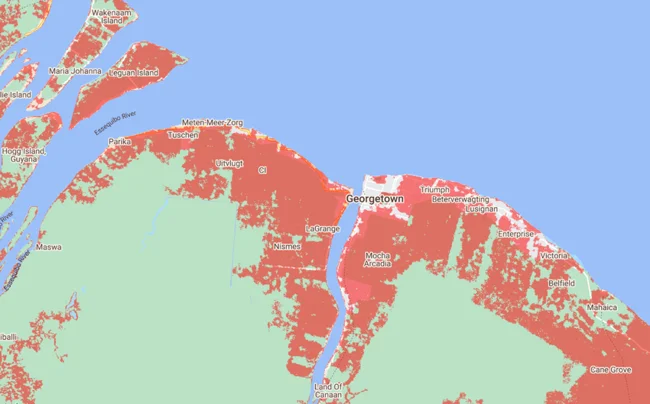
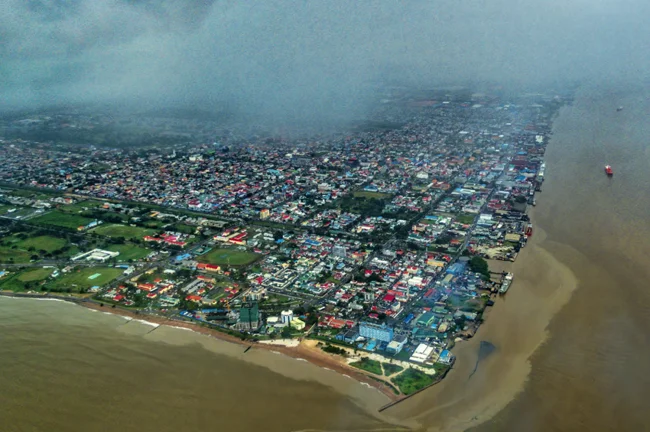
Given that about 90 percent of George Town's population lives on the coast, the worsening climate means the city will need to significantly strengthen its "sea wall" so that the central areas of the city are not affected.
Savannah
The city of Savannah, Georgia, which often finds itself in the hotspot of hurricanes, even in calm times faces problems due to water approaching it from all sides. 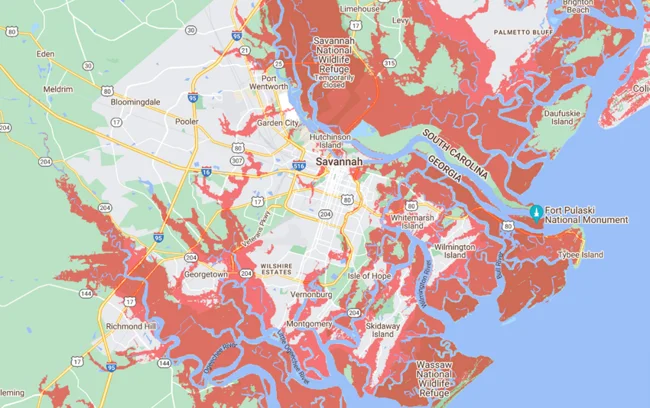
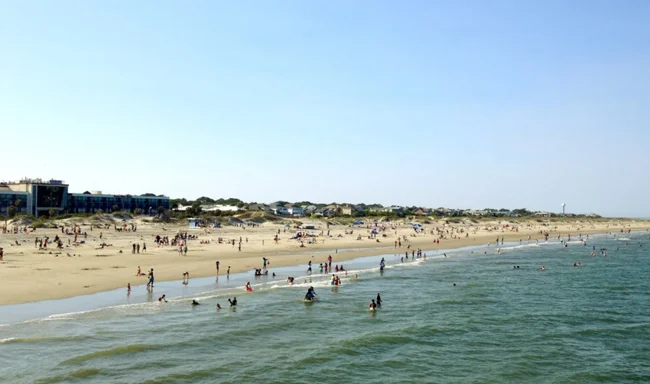
The Savannah River in the north and the Ogeechee River in the south of the city flood so much during periods of high water that they turn hundreds of square kilometers of land into swamps. If the level of the World Ocean continues to rise, then in 10 years the city may be completely cut off from land.
